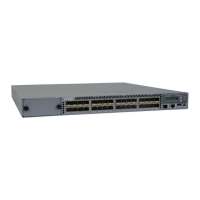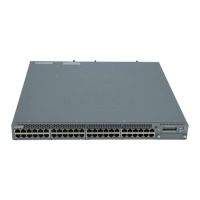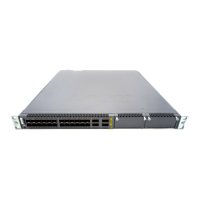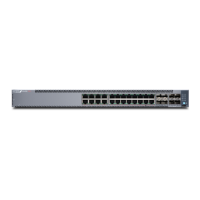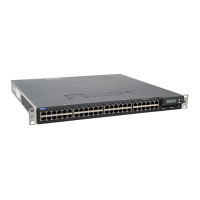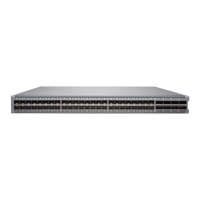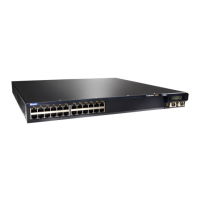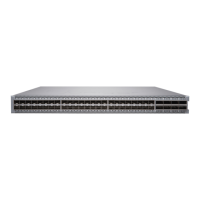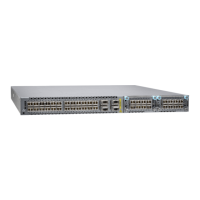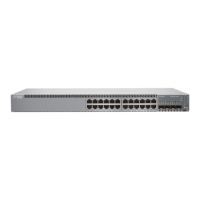WARNING: Do not leave a fiber-optic transceiver uncovered except when inserting
or removing a cable. The rubber safety cap keeps the port clean and prevents
accidental exposure to laser light.
3. If the port in which you want to install the transceiver is covered with a dust
cover, remove the dust cover and save it in case you need to cover the port later.
If you are hot-swapping a transceiver, wait for at least 10 seconds after removing
the transceiver from the port before installing a transceiver.
4. Using both hands, carefully place the transceiver in the empty port. The
connectors must face the switch chassis.
CAUTION: Before you slide the transceiver into the port, ensure the transceiver is
aligned correctly. Misalignment might cause the pins to bend, making the transceiver
unusable.
5. Slide the transceiver in gently until it is fully seated.
6. Remove the rubber safety cap when you are ready to connect the cable to the
transceiver.
WARNING: Do not look directly into a fiber-optic transceiver or into the ends of
fiber-optic cables. Fiber-optic transceivers and fiber-optic cables connected to
transceivers emit laser light that can damage your eyes.
Figure 33: Installing a Transceiver in an EX Series Switch
Related Topics ■ Removing a Transceiver from an EX Series Switch on page 126
■ Connecting a Fiber-Optic Cable to an EX Series Switch on page 98
■ Optical Interface Support in EX2200 Switches
■ Optical Interface Support in EX3200 and EX4200 Switches
■ Optical Interface Support in EX4500 Switches on page 31
■ Optical Interface Support in EX8200 Switches
82 ■ Installing a Transceiver in an EX Series Switch
Complete Hardware Guide for EX4500 Ethernet Switches
